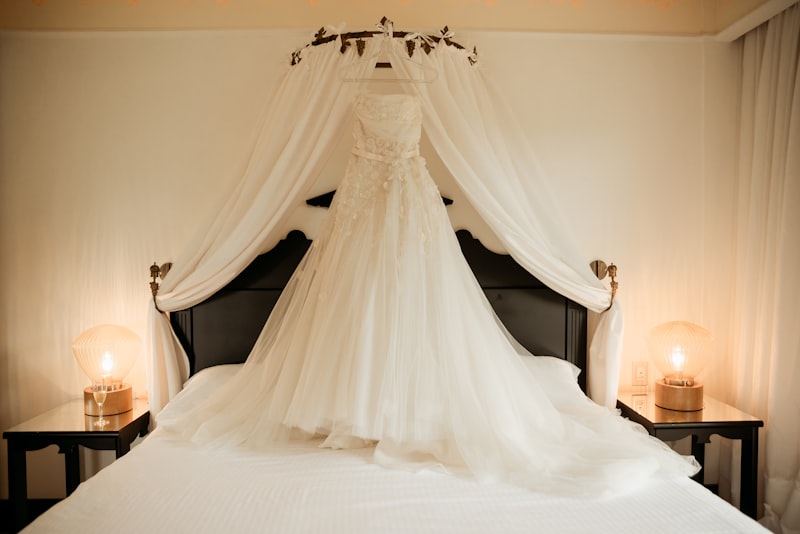Startup Costs for Opening a Bridal Boutique: Essential Insights and Breakdown
Startup Costs for Opening a Bridal Boutique: Essential Insights and Breakdown
Starting a bridal boutique can be an exciting and lucrative business venture. However, it is crucial to understand the startup costs involved to ensure a successful opening. This article will delve into the various expenses associated with starting your bridal boutique, offering insights and tips to help you navigate this exciting journey successfully.
Understanding the Basics of Startup Costs
Before diving into specific figures, it is essential to comprehend what constitutes startup costs. Startup costs are the initial expenses incurred to establish your business before it generates any revenue. These costs can vary greatly based on location, business size, and marketing strategies. Below, we will provide a comprehensive list of the key expenses you will need to prepare for.
Key Startup Costs for Your Bridal Boutique
| Expense Category | Estimated Cost |
| Location Lease | $1,200 - $5,000/month |
| Renovations and Decor | $5,000 - $20,000 |
| Inventory (Dresses & Accessories) | $15,000 - $50,000 |
| Licenses and Permits | $100 - $1,000 |
| Utilities (Electricity, Water, Internet) | $300 - $1,000/month |
| Marketing and Advertising | $500 - $5,000 |
| Staff Salaries | $2,000 - $8,000/month |
| Insurance | $500 - $2,000/year |
1. Location and Lease Expenses
Your bridal boutique’s location plays a crucial role in your business strategy. Rental costs can vary widely based on the area you choose. In prime locations with high foot traffic, you may pay more, but the potential for high sales volume may justify these expenses. Allocate between $1,200 and $5,000 a month for leasing your retail space, depending on local real estate prices.
2. Renovations and Styling
Creating an inviting and aesthetically pleasing storefront is vital for attracting customers. Depending on your vision, renovations can range from minor upgrades to complete overhauls. This could cost between $5,000 and $20,000. Consider investing in elegant display fixtures, lighting, and décor that resonates with your target audience.

3. Inventory Costs
One of the most significant startup expenses will be your inventory. Bridal dresses can vary in price drastically; hence, it is advisable to stock a range of styles and price points. Expect to invest between $15,000 and $50,000 initially. Work with established designers or wholesalers to secure quality dresses and accessories. Keep in mind that offering a mix of high-end and budget-friendly options can cater to a wider clientele.
4. Licenses and Permits
Starting any retail business requires obtaining the appropriate licenses and permits. Depending on your state or province, these might include a business license, sales tax permit, and possibly a resale license. Total costs might range from $100 to $1,000. Always check local regulations to ensure compliance and avoid fines.
5. Utilities
Ongoing operating expenses such as utilities should also be factored into your budget. These costs can include electricity, water, and internet services, typically ranging between $300 and $1,000 a month. Establishing relationships with local vendors can help in managing these expenses effectively.
6. Marketing and Advertising
To stand out in the competitive bridal market, a robust marketing strategy is essential. Initial efforts may include website development, social media marketing, and promotional events. You should budget around $500 to $5,000 for marketing in your first few months. Not only will this increase visibility, but it will also help in establishing a loyal customer base.
7. Staffing Costs
If you plan to hire employees, it’s crucial to budget for their salaries. Depending on your business size and location, staff salaries can range from $2,000 to $8,000 a month. Invest in the training and development of your staff to ensure they can provide exemplary customer service, which is essential in the bridal industry.
8. Insurance Needs
Insurance is a critical aspect of protecting your business. Equipping yourself with general liability, property insurance, and possibly workers' compensation will protect you against unforeseen circumstances. You can expect to spend between $500 and $2,000 a year on insurance, depending on your coverage needs.
Future Considerations and Industry Trends
The bridal industry is constantly evolving, driven by trends and customer preferences. As you think about your startup costs, also keep an eye on potential future investments. For instance, sustainable and eco-friendly bridal wear is becoming increasingly popular. Researching and potentially adding eco-conscious options to your inventory could set your boutique apart from competitors.
Conclusion: Summary of Key Points
Starting a bridal boutique requires significant financial planning and consideration of numerous factors. By understanding the startup costs – from leasing a location to obtaining inventory and licenses – you're better equipped to launch a successful business. Remember to remain flexible and open to adjusting your budget as you gather more insights into your market. Always keep customer preferences at the forefront when making decisions about inventory and marketing strategies.
In summary, a wise approach to managing your startup costs and ongoing expenses will not only help you launch smoothly but also ensure your bridal boutique thrives in a competitive market. Good luck on your entrepreneurial journey!
